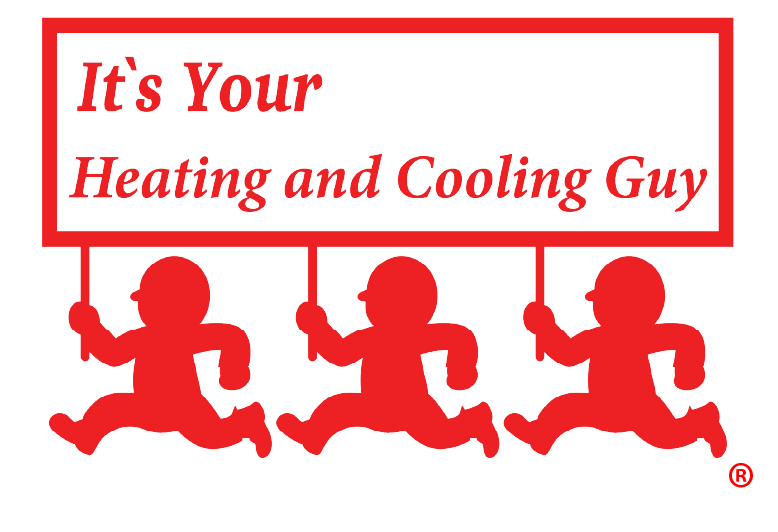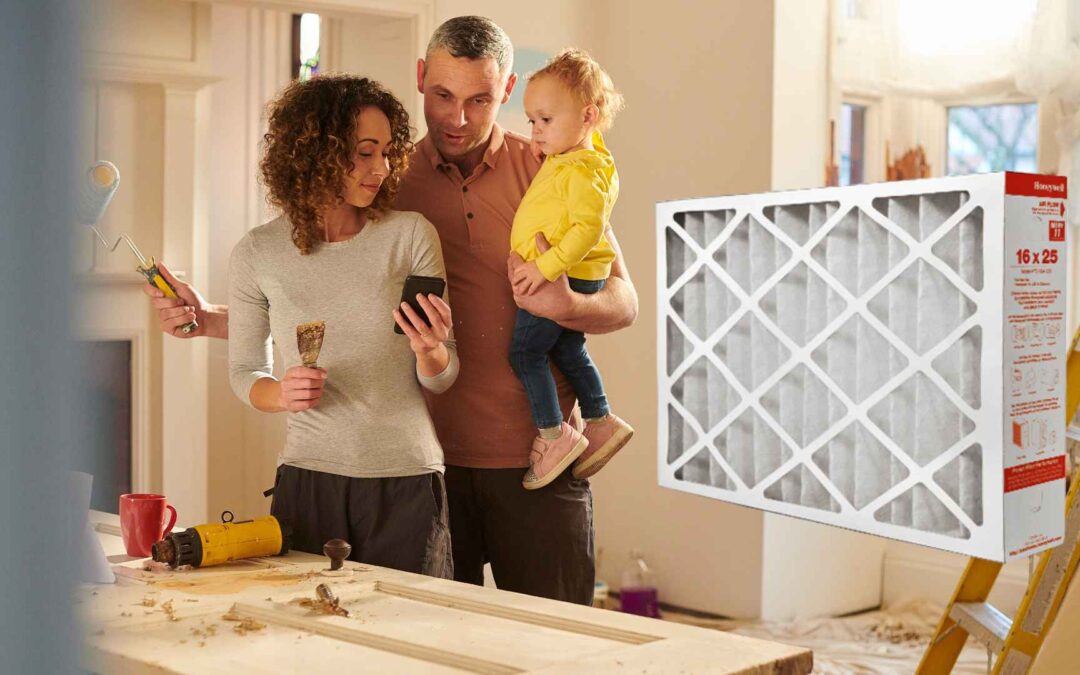At this point, you should understand the importance of replacing furnace filters and AC filters in your home. They’re only going to last for about 3 months before you’ll need to purchase new ones to put in their place.
But what you might not realize is that all air filters for HVAC systems are not created equal. You will, for example, have the option to purchase either a pleated filter or a non-pleated filter for your HVAC system.
You’re welcome to invest in whichever type of air filter you want for your HVAC system. But the filter you pick out will play a big part in your home’s air quality. You might also find that you’ll experience more AC problems that’ll require AC repair services if you don’t use the right filter all the time.
In this article, we’re going to take a look at what a pleated filter is, how it works, and why you should use one in your home’s HVAC system.
What is a Pleated Filter?
Before we begin talking about how a pleated filter works and why it can be so beneficial for your home, you need to know what one is. So let’s get things started by providing you with a quick answer to the question, “What is a pleated filter?”
A pleated filter is a type of HVAC filter that’s made out of any number of pliable materials. These materials can include cotton, paper, and/or polyester.
Unlike other HVAC filter options, a pleated filter is known to have a very high surface area. This enables this kind of filter to trap more contaminants than other options.
Just about every pleated filter will come with a MERV (minimum efficiency reporting value) rating of at least 5, though some will be higher than that. The higher this rating is, the better a pleated filter will be when it comes to filtering the air in a home prior to it passing through an HVAC system.
What is a Non-Pleated Filter?
Now that you have a much better idea as to what a pleated filter is, we would also like to briefly touch on what a non-pleated filter is. It’ll help to show what sets pleated filters apart from non-pleated ones so that you know why you should go with pleated options.
A non-pleated filter is a type of HVAC filter that’s made out of either fiberglass or another electrostatic material. This material is woven together to form a barrier that air will pass through while working its way through an HVAC system.
While a non-pleated filter will help to trap some of the contaminants that attempt to sneak into an HVAC system, it won’t be as effective as a pleated filter. It’s only going to have a MERV rating that falls somewhere between 2 and 4. This won’t make it the ideal air filter solution for a household that is concerned about allergens in the air.
A non-pleated filter might also need to be replaced more often than a pleated one will. Some non-pleated filters will have to be replaced about once every 30 days.
How Does a Pleated Filter Work?
After hearing about the differences between pleated and non-pleated filters, it should be clear that a pleated filter will often be the best choice for your home’s HVAC system. But we’d also like to break down how a pleated filter works just to drive home the point that it’s going to be the right option for you.
Air will be able to pass through both pleated and non-pleated filters while making its way through your HVAC system. But a pleated filter and its higher surface area will be able to trap more contaminants.
Many pleated filters will be able to filter out particles that are as small as just 0.3 microns. This will put you in a position to improve your home’s indoor air quality by leaps and bounds when you go with a pleated filter.
What Are The Benefits of Using a Pleated Filter?
There are so many incredible benefits that you’ll be able to enjoy when you use a pleated filter in your home’s HVAC system. As we just mentioned, you’ll be able to filter more particles out of the air in your home with this type of filter. It’s easily the biggest benefit of all.
But there are also other benefits that’ll make using a pleated filter well worth it. Here are just a few of them:
- It will filter out more kinds of pollutants from the air than a non-pleated filter
- It will last you a lot longer than a non-pleated filter will
- It will provide your home’s HVAC system with more protection than a non-pleated filter will
Bottom line: You won’t need to be too concerned about your home’s indoor air quality when you put a pleated filter in place in your HVAC system. It’ll make the air in your house so much cleaner than it was before.
Are There Any Downsides to Using a Pleated Filter?
After hearing about all the benefits of using a pleated filter, buying one for your HVAC system might seem like a no-brainer. There are, however, a few potential downsides to using a pleated filter that should also be on your radar.
The first one has to do with the cost of a pleated filter. This type of filter will normally cost a little more than a non-pleated filter will. Fortunately, the cost won’t be that much higher, especially when you consider how infrequently you’ll have to replace pleated filters, but it’s still something to consider.
You’ll also want to consider the fact that using a pleated filter might increase your energy costs a bit. Pleated filters do such an amazing job filtering the air in a home that they’ll force your HVAC system to work a little harder to pull air through them. This can lead to higher energy bills.
But even with this in mind, you still may find that using pleated filters makes sense. The extra money you might spend on your energy bills will be a lot less money than you might have to spend on furnace and ac repairs caused by using a non-pleated filter.
Which Pleated Filter Should You Use?
Would you like to start using a pleated filter in your home? If so, picking out the right one will be of the utmost importance.
The HVAC filter market is huge in this country, which has led to a ton of companies producing their own pleated filters. It can make it a little confusing to select the right pleated filter when you’re in the market for one.
Here are a few factors to consider as you shop around for a pleated filter:
- Search for a pleated filter manufactured by a reputable brand
- Look for a pleated filter with the appropriate MERV rating
- Consider the costs associated with different pleated filters
By remembering these factors when you’re shopping for a pleated filter, you should be able to track down one that’ll work wonders for your home. But if you’re still not sure which one to go with, you should be able to get some great recommendations from a local HVAC company you trust.
How Often Should You Replace a Pleated Filter?
We already alluded to the fact that you should get into the habit of replacing a pleated filter about once every 3 months. But we wanted to stress this again since it’ll be imperative that you make it your mission to replace a pleated filter often enough.
Because pleated filters do such a great job when filtering the air in your home, they will start to get clogged up with contaminants before long. So if you push them beyond the 3-month mark, you may find that they won’t be able to filter the air in your house as effectively as they should.
You may also find that a pleated filter will put a strain on your home’s HVAC system if you don’t replace it accordingly. Don’t be afraid to set a reminder for yourself on your smartphone so that you’re able to stay on top of replacing a pleated filter.
Learn More About Maintaining Your Home’s HVAC System
Using the right HVAC filter in your home’s HVAC system and replacing a pleated filter at regular intervals should help keep your system in excellent shape. But there are also other things you can do to maintain your HVAC system and ensure it lasts for a long time.
It’s Your Heating and Cooling Guy can help you take care of all your HVAC maintenance needs. We can also provide you with furnace and AC repairs and a wide range of other HVAC services.
Contact us today to schedule an appointment.

Bob Ventura
Author
Bob Ventura is a seasoned author with a passion for helping homeowners take better care of their properties through practical, easy-to-understand content. With years of experience writing about home maintenance, Bob specializes in breaking down complex repair and upkeep tasks into simple, actionable steps that readers can confidently follow. His work covers everything from seasonal checklists and preventative care to troubleshooting common issues and improving energy efficiency.



Recent Comments